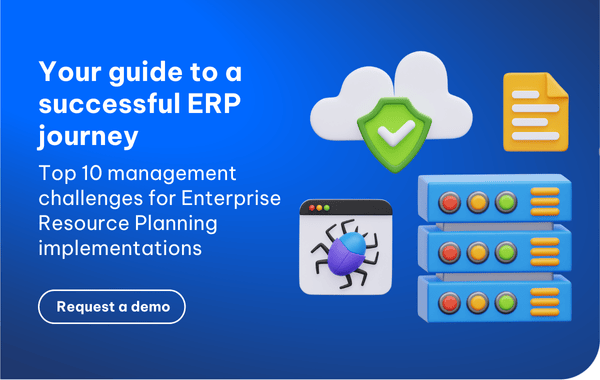Executing an ERP implementation project is among the most expensive, time-consuming and complicated tasks an organization can take on. Delays or unexpected expenses are a risk at all times. To avoid these costly mistakes, having a good plan right from the start is necessary. This series will provide you with step-by-step guidelines for preparing an ERP implementation.
Step 1: Get everyone on board.
“Understand and articulate the need for change.”
The first and foremost action before implementing an ERP system is to get the whole organization to understand the project’s objective. The reason is that decision-makers need support and assistance regarding budget and resources planning for a move many view as enormous. Any confusion or misunderstanding might lead to resistance to change and affect the success of the project.
Recommended steps:
- Define the need for change. Point out the benefits this change will bring to the organization. This can go a long way to gaining buy-in and generating enthusiasm for the implementation..
- Articulate and endorse the vision. Communicate with all project stakeholders why this move is essential and what will be affected negatively if the change is not made. The stakeholders include not only managers or leaders but also low-level staff.
- Be clear on the budget and resources required. It’s necessary to determine the resource distribution at the start to help avoid any abeyance. Also, all project members need to be clear on the commitment required to prevent confusion in case a competing initiative arises.
Step 2: Make sure someone’s removing roadblocks.
“Adequate sponsorship and leadership are critical to success.”
To build solid footing at the beginning, this project must be seen as a high priority. In order to achieve that, the appearance of authoritative sponsorship is extremely important throughout the entire project. This will undoubtedly help remove barriers to change and speed up decisions that will contribute to the success of the execution.
Recommended steps:
- Determine and clearly communicate who the project sponsor is. Doing thisright at the start will prevent roadblocks further down.
- Identify other organizational leaders who need to support and understand the changes. These leaders should aim to erase the obstacles to success. Specifically, with a clear understanding of the political climate, they will help determine the best way to position the project and allocate resources.
- Put on a roadshow presentation for leaders. This will create a fundamental awareness of the implementation’s objective and benefit and makes them important, visible allies on the road.
- Create leadership alignment plans for assigned leaders. Help leaders offer immediate and on-time support to the project with these plans. Incentive and recognition can be included in order to evaluate and felicitate individual achievement during the implementation.
- Proactively facilitate cross-functional sessions. The goal of these is to instill a clear mindset in leaders of their roles throughout the project.
Step 3: Check the rear-view mirror.
“Understand the established business culture and historical response to change.”
Getting a deep understanding of the history always creates huge advantages for future implementations. Organizations should review and take into consideration the prevailing business culture as well as how previous change-based projects were handled. This will help with prioritizing the current project and designing the strategy. Failing to understand the historical response to change may result in change fatigue, which can raise a lack of engagement and project commitment.
Recommended steps:
- Determine the priority of initiatives. Align the ERP project with the relevant priorities of the organization. This will help get resources allocated for the project and encourage a high commitment to the project’s timeline and budget.
- Include a detailed change management and communication plan. Use this plan to support and keep track of change requests in each phase of the ERP implementation. This will create a deep look into the history of the project and the ability of the organization or end users to adapt. This plan will also help mitigate change fatigue throughout the project.
Guideline to a successful ERP journey - Part 2: Get Started >>>
Guideline to a successful ERP journey – Part 3: Stay on track >>>
Or you can download our full whitepaper “Your guide to a successful ERP journey” now to see all the steps.
 English
English  Vietnamese
Vietnamese 



